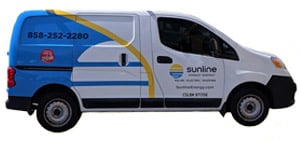The California Independent System Operator (CAISO) is responsible for overseeing the state’s electricity infrastructure. This is the regulatory agency that governs things like power supply and energy transmission.
It recently mapped out a statewide strategy for helping California wean itself off of fossil fuel. By 2030, utilities may be required to generate as much as 50% of their electricity from renewable energy sources.
Over the past couple days, we’ve looked at 2 of the leading strategies recommended by CAISO, including:
- Step 1: improving California’s utility grid so that it can accept more renewable energy
- Step 2: reshaping green energy demand so that we make optimal use of renewable power sources
Today, we’ll look at the 3rd and final step: regional power sharing.
What Does Regional Power Sharing Mean Exactly?
We often view electricity on a statewide basis. California has its utilities, and Arizona has its own power providers.
But America’s electricity grid is actually a vast network of interconnected stations and substations. Some markets are more reliant on coal, while others tend to use more natural gas. But the electricity flows in between these different regions based on availability, supply, and demand.
CAISO recommends adopting this same approach when it comes to renewable power. Throughout the western portion of North America, you have tons of:
- Hydroelectricity in British Columbia
- Geothermal power in Colorado
- Wind energy in Montana
- Solar power in California
Each one of these green energy sources is highly variable, with its own peaks and valleys throughout the day. This makes predicting local power output very challenging.
But in aggregate, all of these renewable energy sources produce fairly predictable power output. And by coordinating these resources, these markets can collectively generate and share consistent power. Excess green energy in one area can be directed to regions experiencing a lull.
For example:
- On Monday, California is overcast and can’t generate a lot of solar power. Fortunately, Montana has plenty of wind energy to go around.
- On Tuesday, California is bathed in sunlight, but Montana’s wind turbines are underperforming.
With the right coordination, these 2 markets can easily trade green resources and fill each other’s gaps.
Is Green Energy Sharing Realistic?
The above scenario is very achievable, and efforts are already underway to fully develop an Energy Imbalance Market that can efficiently coordinate and redirect green energy sources across vast distances.
Working out the nuts and bolts is still a bit challenging – mainly because grid prices are so different within each market. But because renewable energy inputs like sunshine and wind are mostly free, these rate differences are becoming less important with time. And as individual states bring on more renewable energy capacity, the Energy Imbalance Market will become even more streamlined.
The long-term implications of this are quite exciting.
In California alone, we have enough solar potential to cover our entire state’s electricity needs 5 times over. Montana’s wind potential is off the chart. And we’ve barely scratched Colorado’s geothermal possibilities.
In other words, each one of these markets is blessed with abundant renewable energy sources. And there’s no reason why we can’t reach 50% green power capacity by 2030. In fact, 100% renewable energy should be our goal.
Green Energy Simply Works
And there you have it. 3 sensible steps for moving California off of fossil fuel. CAISO’s green energy roadmap doesn’t require major scientific breakthroughs or new inventions. It leverages tools that already exist. We just need a little better policy to help accelerate the transition.
But you don’t have to wait for new policy.
By going solar today, you can help push California closer to its 2030 renewable energy goal. And installing PV panels on your property also ends up saving you a ton of money every month.
To learn more about the many benefits of going solar, schedule a free appointment with Sunline Energy today.

